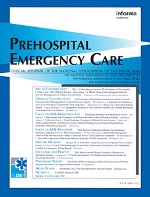
TRAUMA
Administration of continuous ketamine not effective in trauma patients en route to ED
Prehosp Emerg Care. 2015 January-March;19(1):10-1666 patients with isolated traumatic orthopaedic injuries requiring transport to hospital were treated out-of-hospital with an initial intravenous morphine and ketamine bolus, and then randomized to receive either a continuous ketamine or saline infusion. The purpose of this study was to evaluate the effect of continuous ketamine on additional analgesia needs and pain score during transport to the emergency department. Median treatment time was 35 minutes in both groups. Morphine consumption (excluding initial dose) and pain scores were similar between groups when they were evaluated upon arrival to the hospital.
Unlock the full ACE Report
You have access to {0} free articles per month.Click below to unlock and view this {1}
Unlock NowCritical appraisals of the latest, high-impact randomized controlled trials and systematic reviews in orthopaedics
Access to OrthoEvidence podcast content, including collaborations with the Journal of Bone and Joint Surgery, interviews with internationally recognized surgeons, and roundtable discussions on orthopaedic news and topics
Subscription to The Pulse, a twice-weekly evidence-based newsletter designed to help you make better clinical decisions
Exclusive access to original content articles, including in-house systematic reviews, and articles on health research methods and hot orthopaedic topics
Or upgrade today and gain access to all OrthoEvidence content for just $1.99 per week.
Already have an account? Log in


Subscribe to "The Pulse"
Evidence-Based Orthopaedics direct to your inbox.
{0} of {1} free articles
Become an OrthoEvidence Premium Member. Expand your perspective with high-quality evidence.
Upgrade Now












































































